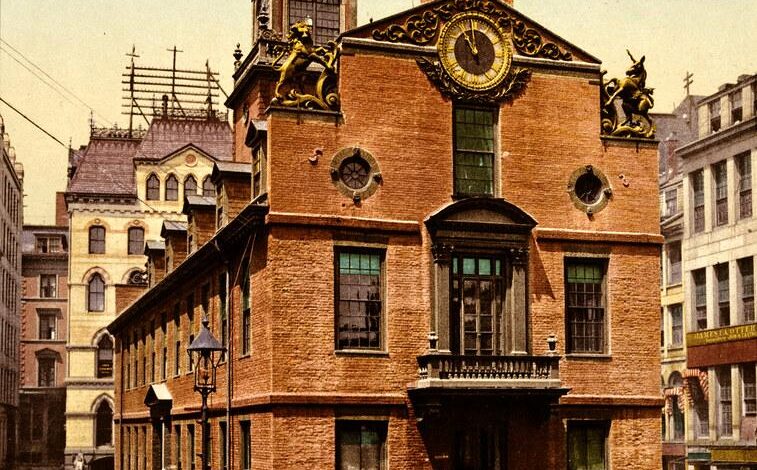Useful Efforts of Boston to Preserve Historical Landmarks

Boston is home to many historical landmarks that reflect its rich past. The city is known for its rich history, and has made significant efforts to preserve its historical landmarks. The Boston Landmarks Commission, established in 1975, is responsible for protecting and preserving Boston’s historic buildings and districts. The Boston Preservation Alliance also plays a crucial role in advocating for preservation and educating the public about the importance of maintaining historic sites.
According to the comment of Boston Mayor Michelle Wu in a 2023 press release on historic preservation efforts. She said, Boston’s historic landmarks are the threads that weave together the city’s rich tapestry. As we look to the future, we must remain steadfast in our commitment to preserving our past, ensuring that the stories of our city continue to inspire and educate. Some of these historical landmarks are the Old State House which was built in 1713.
The State House building is one of Boston’s oldest surviving structures. It served as the seat of the Massachusetts government until 1798 and is famously associated with the Boston Massacre. Another landmark is the Paul Revere House, a 1680 house in the North End which is the oldest building in downtown Boston and was the home of Paul Revere during the American Revolution. It is now a museum dedicated to Revere’s life and the colonial period.
Other historical landmarks are the USS constitution, Bunker Hill monument, Fenway park and many others. Boston has several historic districts, such as Beacon Hill, Back Bay, and the South End, which have special regulations to maintain their architectural integrity. These districts often require property owners to get approval before making changes to their buildings. Many Boston landmarks are listed on the National Register of Historic Places, which helps protect them at the federal level.
The National Register of Historic Places (NRHP) is a federal program that recognizes and protects buildings, structures, districts, sites, and objects deemed significant in American history, architecture, archaeology, and culture. It is managed by the National Park Service under the U.S. Department of the Interior. This designation can provide financial incentives for preservation, such as tax credits for renovation work. Properties listed in the National Register are officially recognized for their historical and architectural significance.
In Boston, this includes a wide range of sites, from iconic landmarks like the Boston Massacre Site to notable neighborhoods such as Beacon Hill. To be listed, properties must meet specific criteria, including association with significant historical events, notable individuals, or architectural significance. Adaptive Reuse is another unique way Boston has preserved its historical landmark.
Boston has successfully repurposed many historic buildings for new uses while retaining their historic character. Examples include converting old factories into lofts or turning historic schools into community centers. Adaptive reuse is a key strategy for preserving historical landmarks in Boston. This approach involves repurposing historic buildings for new uses while retaining their architectural and historical significance.
It offers a practical solution to the challenges of preserving old structures in a rapidly evolving urban environment. Adaptive reuse projects maintain the original architectural elements of historic buildings, such as facades, structural details, and interior features. This helps preserve the historical character and aesthetic value of the buildings. By repurposing historic buildings, adaptive reuse helps retain the cultural and historical context of neighborhoods, ensuring that the past remains a part of the present urban fabric.
The Boston public market project converted a historic building in the Haymarket area into a vibrant public market space while preserving its historic character. It serves as a local food hub and tourist attraction. Originally the Charles Street Jail, this building was transformed into a luxury hotel. The adaptive reuse preserved the building’s distinctive architectural elements while introducing modern amenities.
Balancing modern needs with historical integrity requires careful design and planning to avoid compromising the building’s original features. Adaptive reuse is a powerful tool for preserving Boston’s historical landmarks. By repurposing and revitalizing old buildings, Boston can maintain its rich architectural heritage while accommodating modern needs and fostering sustainable urban development.
Another fundamental aspect of preserving Boston’s historical landmarks are restoration Projects. These projects focus on returning buildings and sites to their original condition or as close to it as possible, ensuring that the city’s architectural and historical heritage is maintained for future generations. The city invests in the restoration of significant historical sites, such as the Old State House, the Paul Revere House, and the Boston Tea Party Ships and Museum.
Restoration projects often involve extensive research to understand the original design, materials, and construction techniques used in historic buildings. This ensures that the restoration work is historically accurate. Restoration projects use historically accurate materials and construction methods to maintain the building’s original appearance and structural integrity.
Although these projects help preserve Boston’s historical narrative and attract tourism, integrating modern amenities and systems while maintaining historical authenticity can be challenging and requires careful planning. Restoration projects can be costly and often require securing funding from public, private, and non-profit sources. Grants, tax credits, and fundraising efforts are often crucial. Community involvement is crucial for preserving Boston’s historical landmarks.
Engaging residents, businesses, and organizations in preservation efforts fosters a sense of ownership and stewardship, which enhances the success and sustainability of preservation initiatives. Local organizations and community groups are involved in preservation efforts, often working alongside city officials to ensure that Boston’s sites are maintained and celebrated. Community involvement raises awareness about the significance of historical landmarks and the need for preservation.
Educational programs, tours, and events can inform residents about the historical and cultural value of local sites. Schools and youth organizations can participate in educational programs that emphasize the importance of preserving local history and encourage students to become involved in preservation efforts. Boston promotes the history and significance of its landmarks through educational programs and public outreach, helping residents and visitors appreciate the city’s historical heritage.
Local advocacy groups and neighborhood associations can play a powerful role in preserving landmarks by lobbying for protections, raising funds, and rallying public support. They often serve as a voice for the community in preservation debates. Community-led campaigns can draw attention to threatened landmarks and mobilize public opinion, leading to increased pressure on policymakers and developers to preserve these sites. These combined efforts contribute to preserving Boston’s historical charm and ensuring that future generations can experience and learn from the city’s past.


